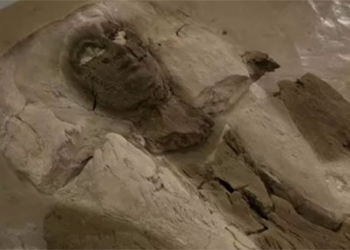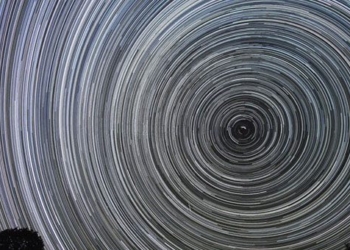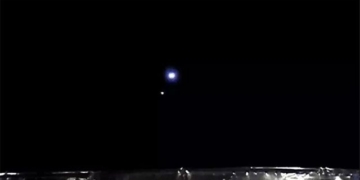Today, the existence of the following locations remains a mystery that baffles scientists.
Mysterious Places on Earth That Scientists Can’t Explain
- 1. The River That Boils Everything
- 2. The Cave Filled with Sulfur Gas
- 3. The Well That Turns Objects to Stone
- 4. The Deadly Radioactive Lake
- 5. The Ground Aquarium
- 6. The Casorzo Double Tree
- 7. Maracaibo – The Endless Lightning Storm
- 8. The Blue Pond in Hokkaido
- 9. The Singing Stones of Pennsylvania
- 10. The Blue Lava Volcano
1. The River That Boils Everything
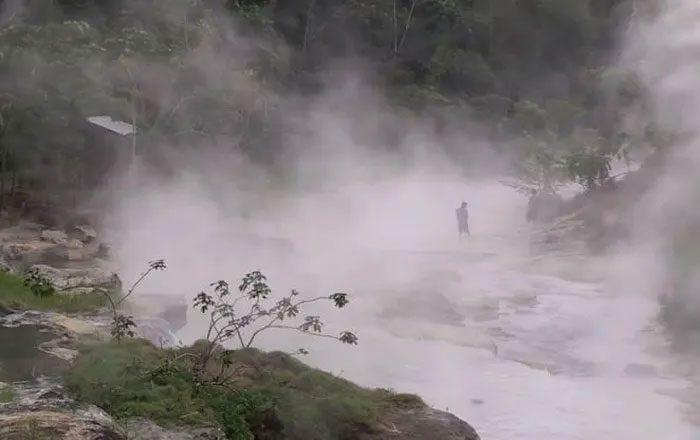
The river steams due to its extremely high temperature.
The Shanay Timpishka River stretches 4 miles and is located deep in the Amazon rainforest of Peru. It possesses a strange characteristic that no other river in the world has: temperatures reaching up to 91 degrees Celsius. This heat has earned it the nickname “river of death,” as any animal that accidentally falls in is boiled alive. Scientists have investigated to find the cause, but results are still inconclusive. Typically, hot water sources are found near volcanoes, but Shanay-Timpishka is different; the nearest volcano is about 700 km away.
One hypothesis proposed by scientists is that heat from underground fissures has transformed the river into a unique and perplexing geothermal system.
2. The Cave Filled with Sulfur Gas

A strange organism thrives on sulfur bubbles.
A group of workers discovered the Movile Cave while searching for a site to build a power plant in southeastern Romania. This cave has an incredibly toxic atmosphere, with CO2 levels 100 times higher than on the surface and filled with H2S gas. Deep inside the cave is a sulfur lake that emits a strong smell of rotten eggs. According to scientists, this cave has been isolated from sunlight for 5.5 million years. The most remarkable aspect is that an ecosystem has existed there for many years. A total of 33 species have been discovered that survive by obtaining nutrients from a type of bubble formed on the surface of the rocks.
3. The Well That Turns Objects to Stone
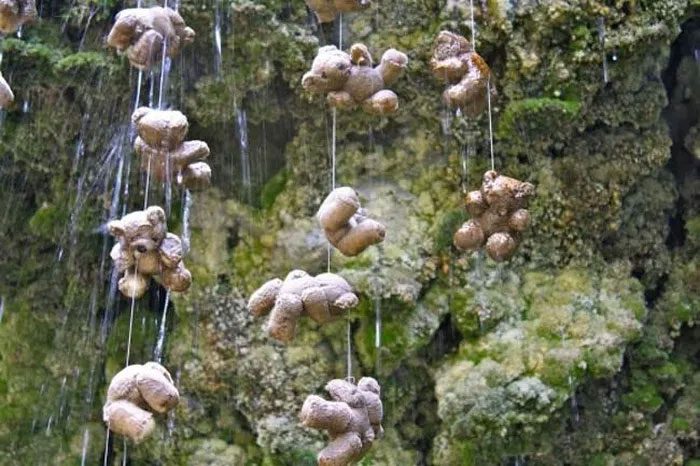
A stuffed bear is suspended under water, gradually forming a mineral layer around it.
Anything you put into the water of this well will bizarrely turn to stone. This “magical” well, thought to exist only in fairy tales, is located in Knaresborough, North Yorkshire, England. The well collects water trickling down from a rocky outcrop that resembles a grinning skull. The petrification process takes about 3 to 5 months. Everything from stuffed animals to bicycles submerged in the well turns into sculptures.
Local residents believe this strange well is cursed by a witch. Scientists explain that the water in the well contains a significantly higher mineral content than usual, creating a special mineral coating for any object that comes into contact with it. This is similar to how stalactites form in caves.
4. The Deadly Radioactive Lake
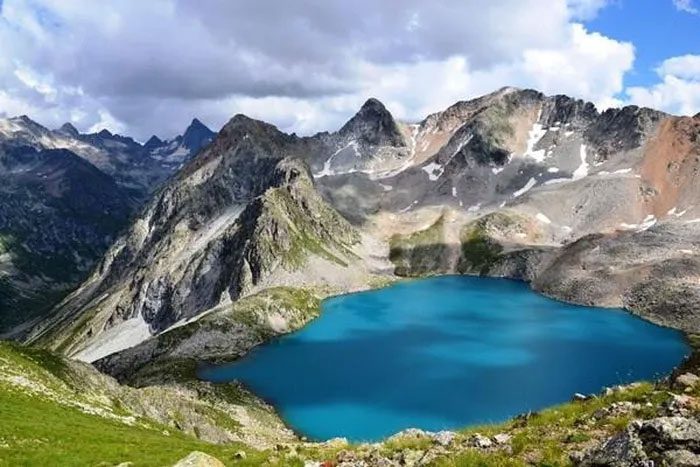
The radioactive lake can kill a person within an hour.
Lake Karachay in Russia is known as the “death lake” due to its radiation levels being higher than anywhere else in the world. It was once the site of a nuclear plant. A person can die just by standing near Lake Karachay for an hour. In 1957, an explosion at this nuclear facility released radiation over an area of more than 23,000 square kilometers. By 1967, the water had evaporated, and radioactive dust was blown an additional 1,450 km away. To mitigate future risks, the lake was covered with concrete, but the toxicity remains extremely high.
5. The Ground Aquarium
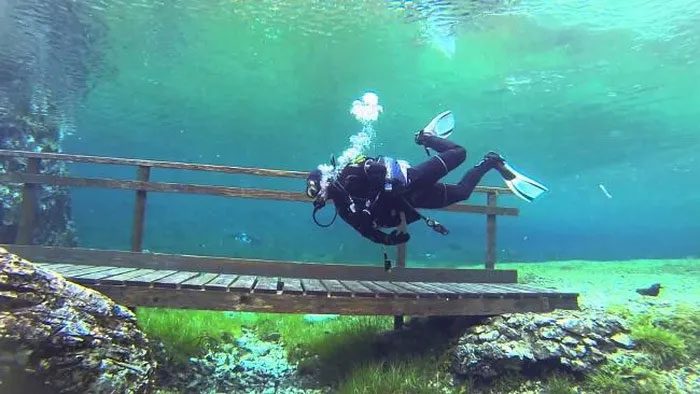
The melting snow turns the park into a vast lake.
In Austria, near the Hochschwab mountain range, lies Grüner See, famous for its beautiful walking trails and fresh air every morning. However, when spring arrives, you will need a diving suit instead of hiking gear, as the entire park gets submerged in water. In winter, the park is covered by a thick layer of snow. In spring, the snow melts, causing the water level in the lake to rise and submerge everything, from benches to bridges, as well as flowers and trees. After some time, when the water recedes, everything returns to normal.
6. The Casorzo Double Tree
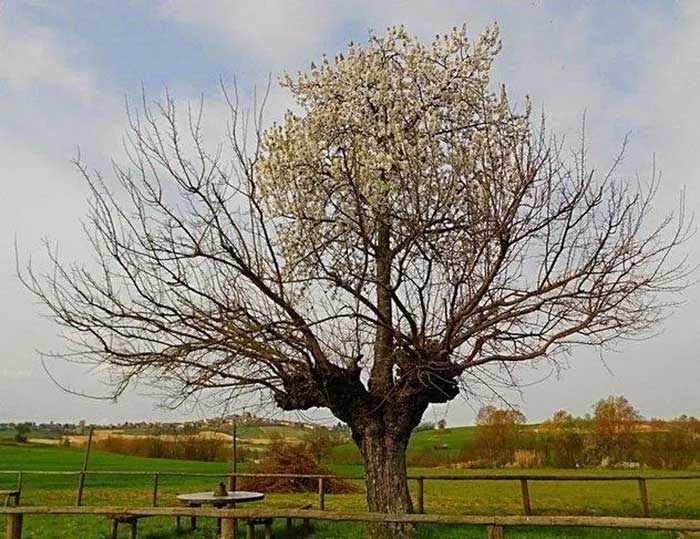
A cherry tree grows directly on top of a mulberry tree.
In the countryside of Piemonte, Italy, a cherry tree thrives and develops directly on the top of a mulberry tree. Theoretically, parasitism on another tree is common in nature, but they are usually small trees with short lifespans. However, in the case of the Casorzo double tree, both the parasitic and host trees are healthy and coexist. No one knows their origin. One hypothesis suggests that birds dropped cherry seeds onto the top of the mulberry tree, where they germinated and grew. After developing and rooting through gaps in the mulberry’s trunk, the cherry tree found underground nutrients to thrive.
7. Maracaibo – The Endless Lightning Storm
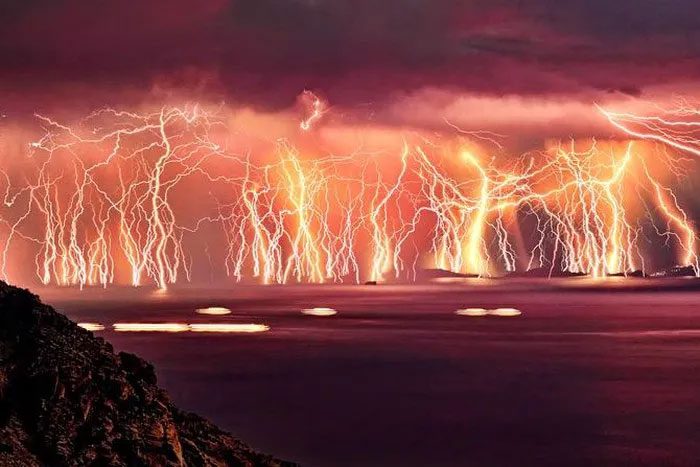
The lightning sea in western Venezuela with 28 strikes per minute.
A continuous and relentless lightning storm occurs over the Catatumbo River in western Venezuela. For about 260 nights a year, starting at 7 PM, lightning strikes this area for the next 10 hours at a frequency of 28 strikes per minute.
For many years, no one has been able to offer a reasonable explanation for this peculiar phenomenon. Recently, some scientists have hypothesized that the geological bedrock beneath this area contains a lot of uranium, but they have yet to prove it. According to another hypothesis, the complex mechanisms of different hot and cold air currents and moisture in the atmosphere have caused this phenomenon.
8. The Blue Pond in Hokkaido
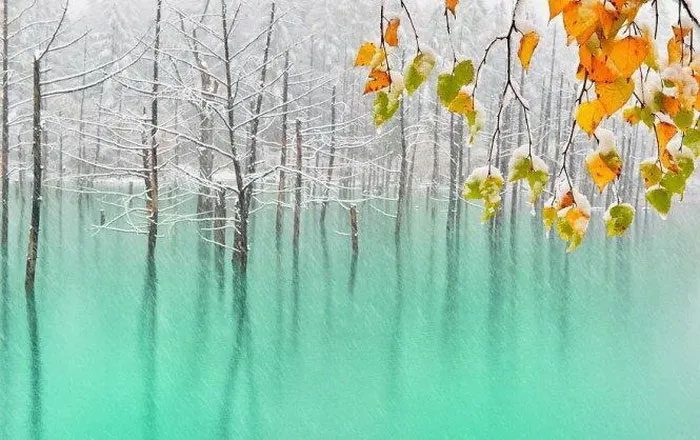
From this angle, the pond water appears green.
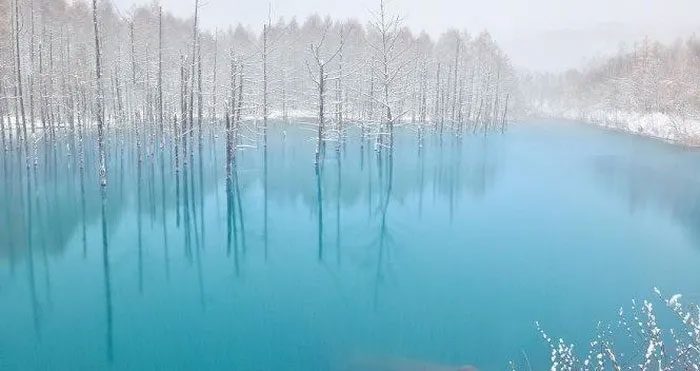
But from another angle, the pond appears blue.
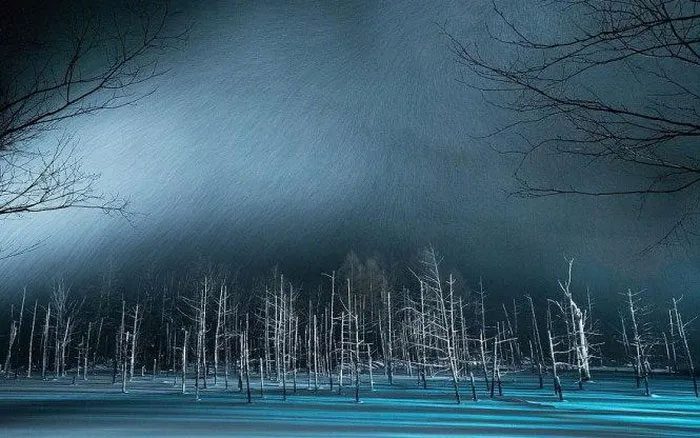
The pond’s color deepens during snowstorms.
The pond on Hokkaido Island is a unique tourist spot in the world. The water in the pond changes colors when viewed from different angles. Specifically, the water color varies between shades of green and blue throughout the year. This special pond is an artificial creation built to hold water for a dam. However, the color change of the water surprised its creators. According to scientists, the aluminum OH- molecules dissolved in the pond reflect more blue light than usual.
9. The Singing Stones of Pennsylvania
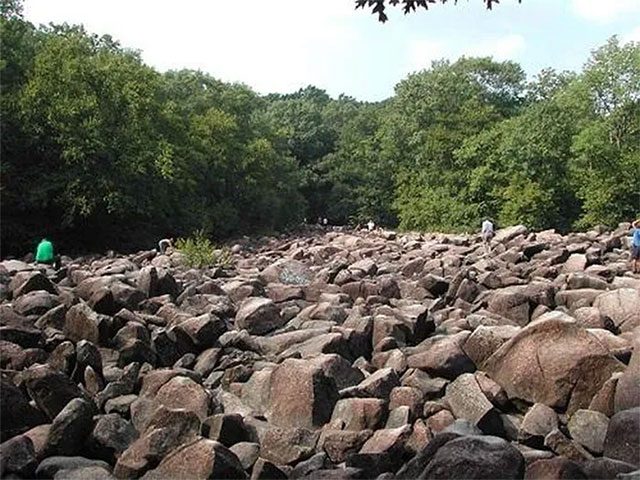
The stones resonate sound.
These stones appear mysteriously on a pasture at the top of a hill in Pennsylvania, USA. The reason for their presence is a mystery, as there are no high rock outcrops nearby, and they could not have fallen from anywhere. The tinkling sound they produce when struck is also quite unique. When a stone is struck, it emits a low-frequency sound that humans cannot hear. However, when placed together, those frequencies resonate into a sound that we can hear. Many hypotheses have been proposed to explain this oddity, but no one can be certain about it.
10. The Blue Lava Volcano
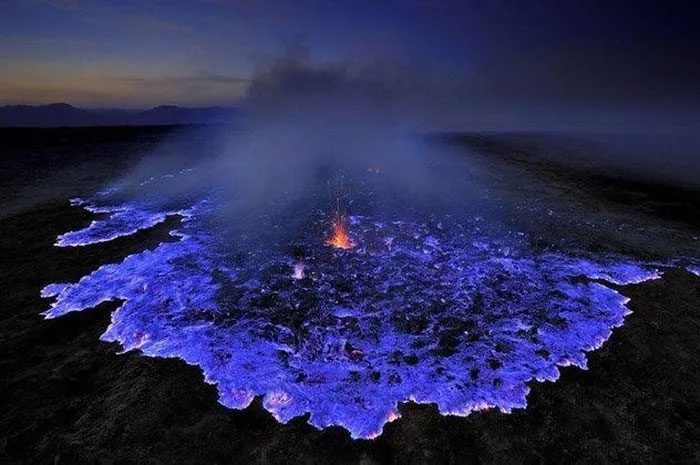
Burning sulfur gas creates a stunning blue color at the volcano’s summit.
The Kawah Ijen volcano in Indonesia erupts blue lava, astonishing many. This phenomenon is believed to be due to its formation over a sulfur gas mine. The sulfur gas is heated and burns up to 5 meters high, then condenses into a liquid that flows down in blue streaks instead of actual lava.
As a result, the atmosphere here is quite toxic, and anyone approaching must wear protective masks.








































